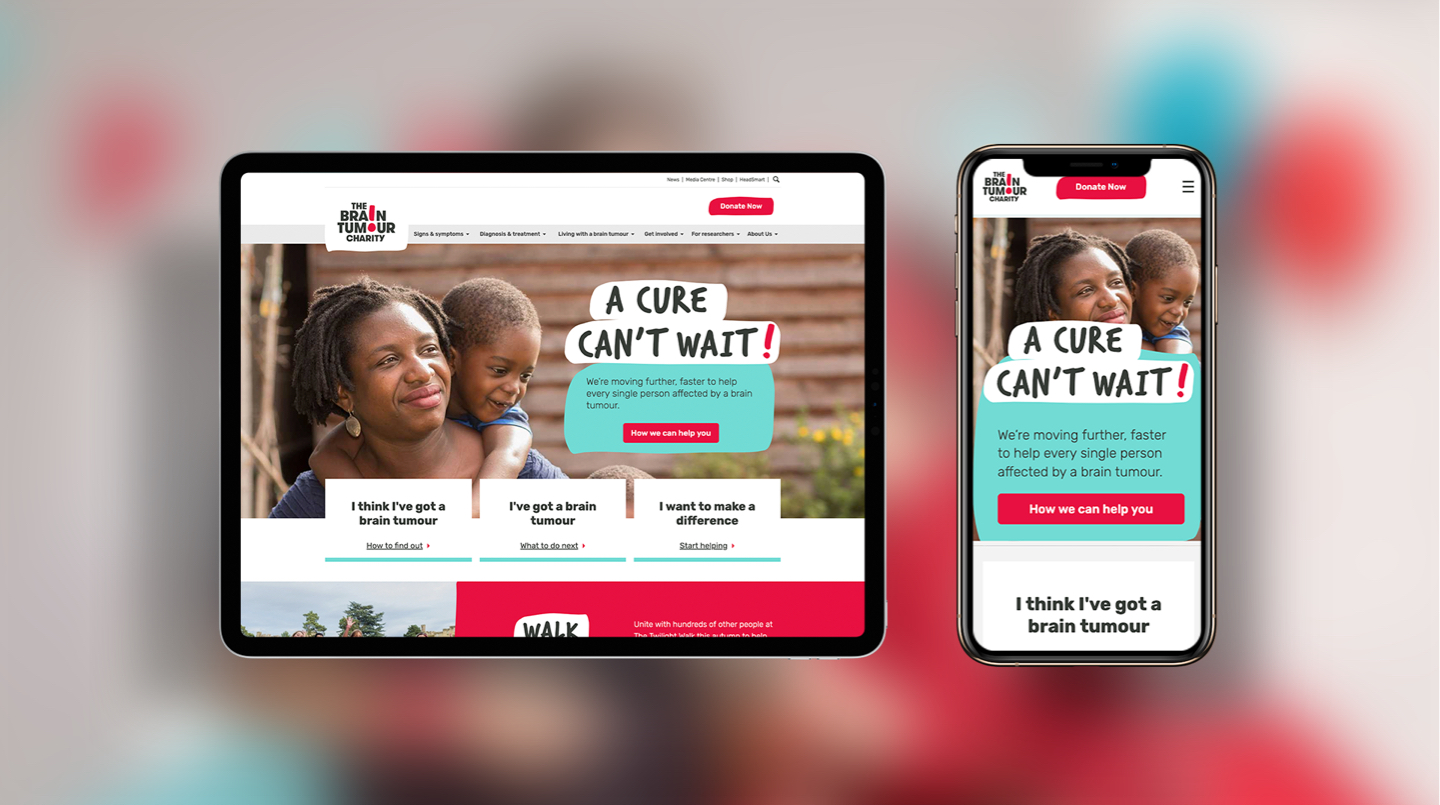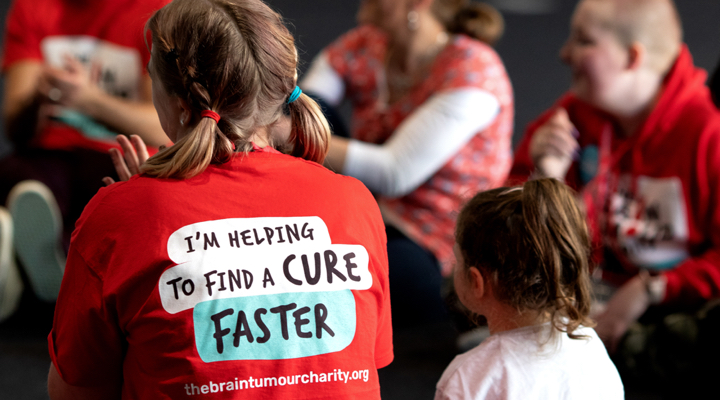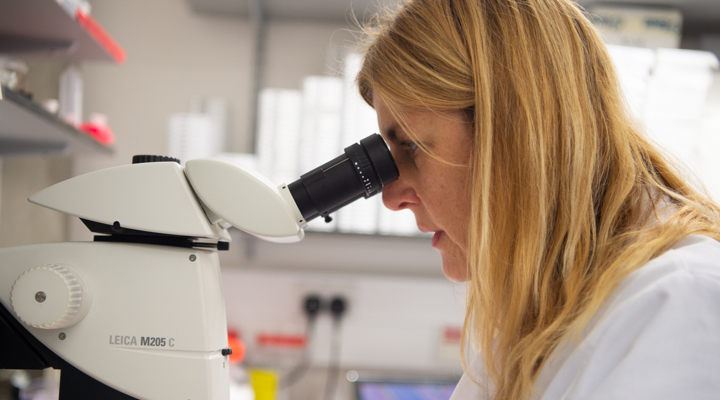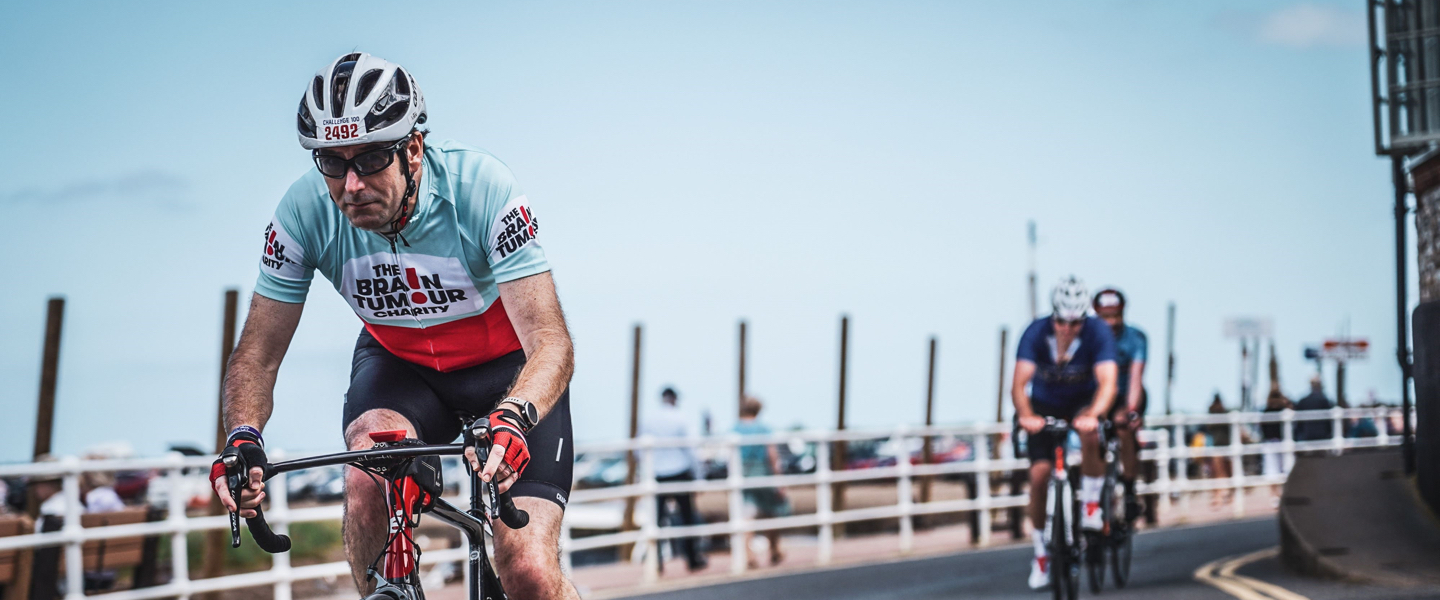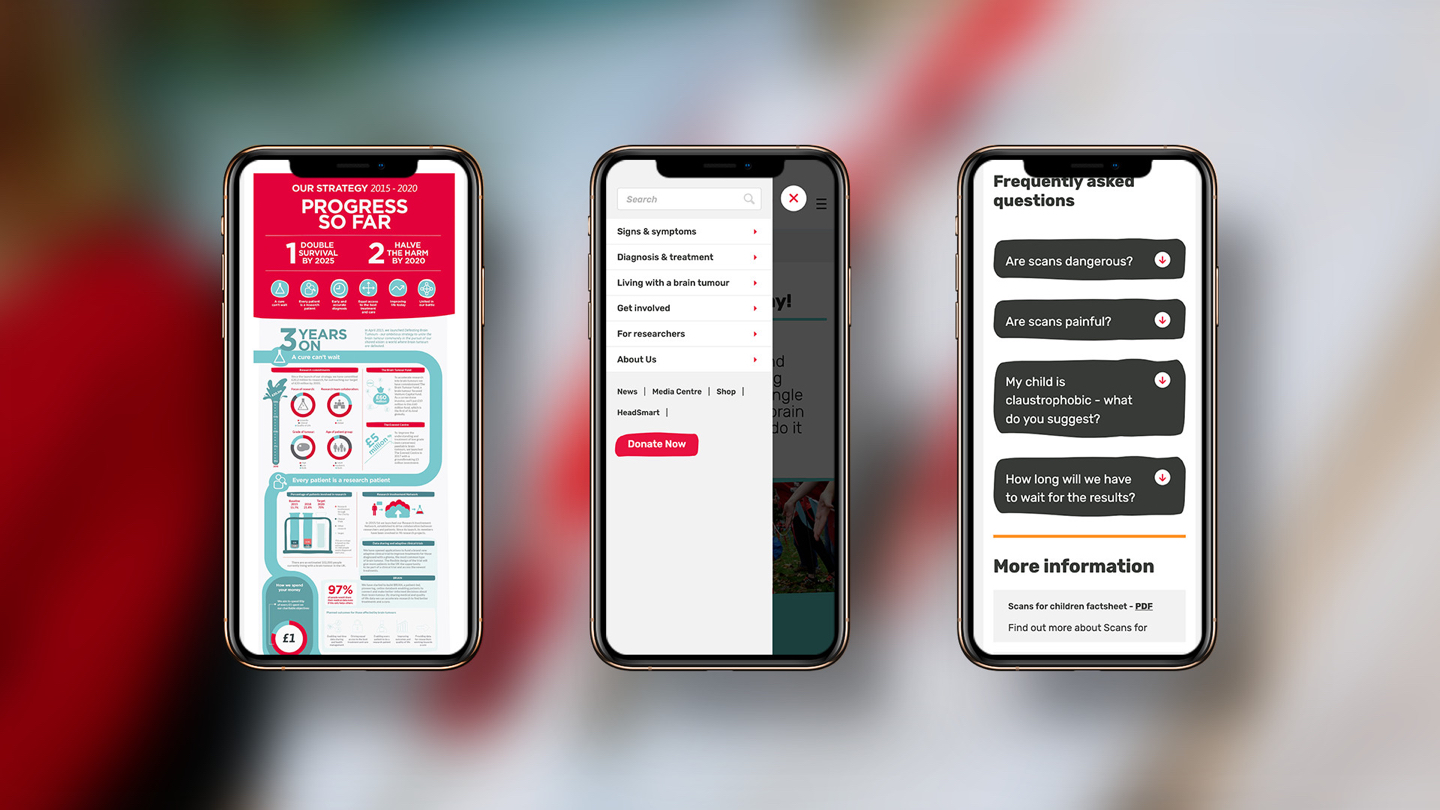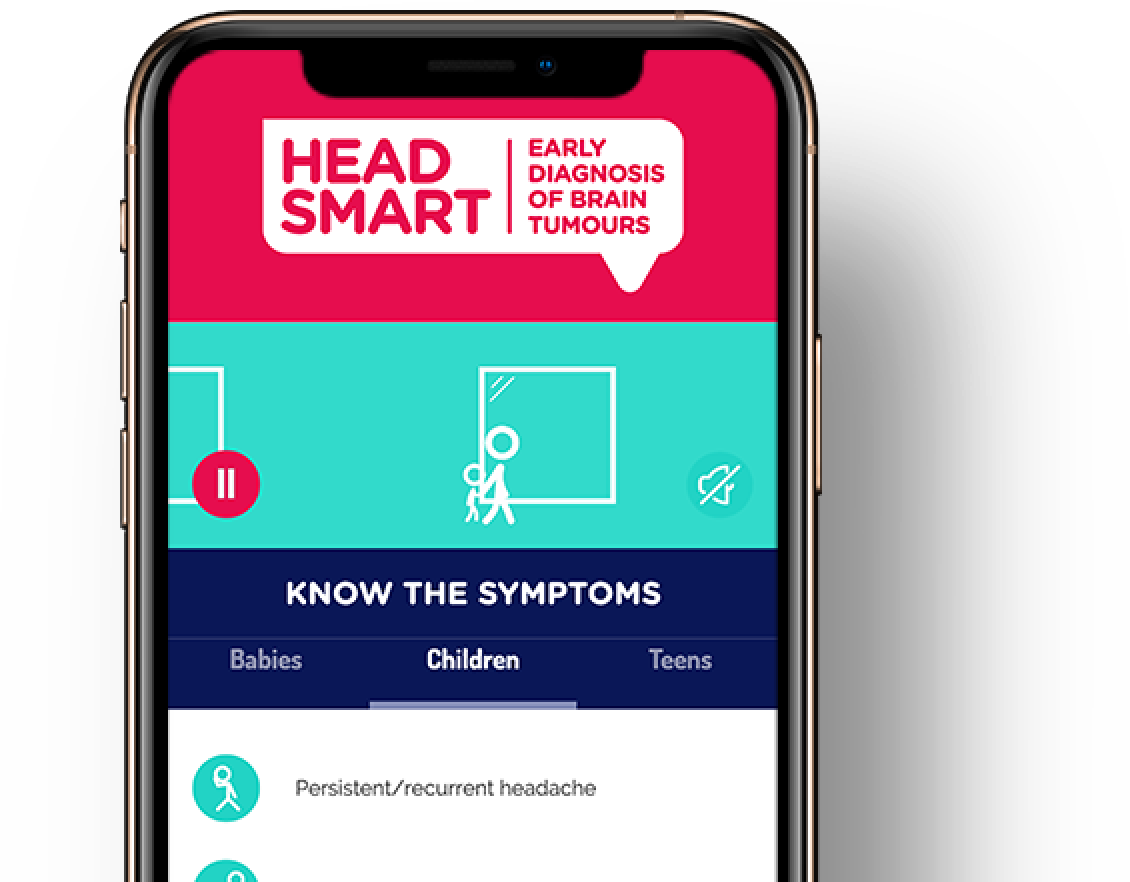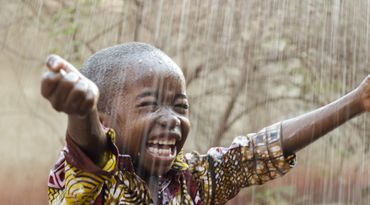Headsmart - Raising parents’ awareness of brain tumour symptoms
In 2017 we launched the HeadSmart campaign; a microsite specifically designed to help parents recognise the symptoms of brain tumours and recruit advocates to spread the message among friends, family, schools and doctors surgeries. We developed a site that was ‘app-like’ in design with a mobile-first strategy so that usability was both familiar and clear. Similarly, the site splits the symptoms into age categories (babies, children, teens) to reflect search terms frequently used in Google by worried parents and to avoid confusion and doubt in diagnosis.











